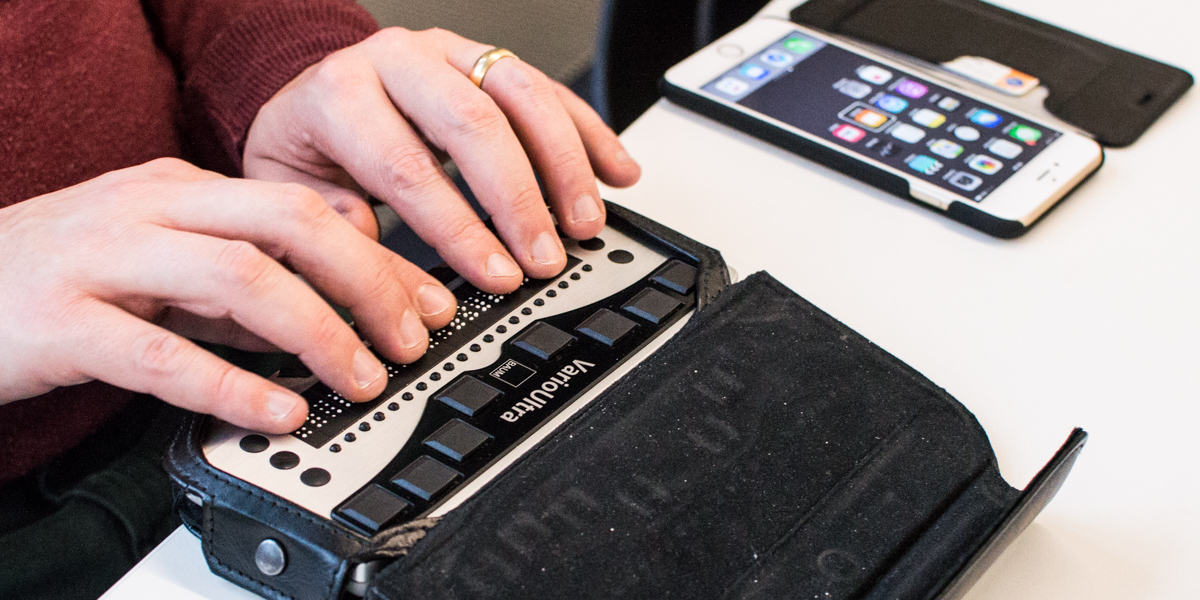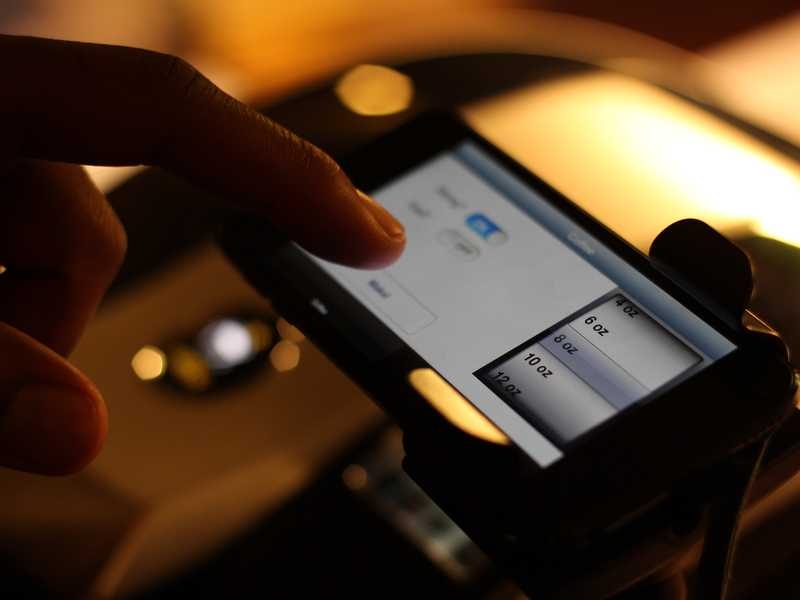AI-Powered Visual Aids: Enhancing Self-Reliance for Blind Users
Discover Cutting-edge Devices Made for the Aesthetically Impaired
The growth of innovative tools for the visually damaged represents a considerable development in accessibility and freedom. Technologies such as clever glasses with AI abilities and mobile applications developed to supply auditory descriptions are improving day-to-day experiences for customers. Additionally, wearable tools that utilize haptic comments boost environmental recognition, while modern Braille technologies supply brand-new means to engage with message. As these tools proceed to develop, their influence on the lives of those with visual impairments raises vital questions concerning the future of inclusivity and autonomy in different elements of life. What exists in advance in this technical landscape?
Smart Glasses for Navigating

Smart glasses designed for navigation are changing the method visually damaged individuals engage with their environment. These sophisticated tools use a combination of electronic camera modern technology, artificial knowledge, and acoustic comments to offer real-time details about surroundings. By utilizing obstacle discovery systems, clever glasses can inform individuals to prospective hazards, enabling safer wheelchair in both unknown and familiar setups.
The combination of GPS innovation further improves navigation capacities, permitting users to obtain auditory directions as they relocate. This hands-free technique not just promotes independence however additionally equips aesthetically impaired people to browse city landscapes with boosted self-confidence. In addition, numerous smart glasses are furnished with features that determine landmarks and street signs, offering contextual info that boosts the customer experience.
Furthermore, the advancement of these devices is constantly advancing, with business working to improve the accuracy of things acknowledgment and increase the range of navigational functions. As smart glasses end up being a lot more budget friendly and obtainable, they hold the possible to dramatically change every day life for visually impaired customers. Inevitably, these cutting-edge tools stand for an important action towards inclusivity, offering improved flexibility and a greater sense of freedom for people browsing the globe around them.

Mobile Apps for Daily Living
How can mobile applications enhance the lives of aesthetically damaged people? Mobile applications are revolutionizing the way visually impaired individuals browse their environments, take care of everyday tasks, and accessibility info. These applications provide vital support with different capabilities, fostering freedom and improving lifestyle.
A number of ingenious mobile apps are made especially for day-to-day living. As an example, applications like Be My Eyes link aesthetically damaged individuals with sighted volunteers via video clip telephone calls, allowing them to get real-time assistance with tasks such as reviewing labels or browsing unknown rooms. Seeing AI, developed by Microsoft, utilizes synthetic intelligence to describe surroundings, checked out text, and identify things, effectively transforming a smartphone into a powerful tool for daily support.
Furthermore, navigation apps tailored for the visually damaged, such as Aira and BlindSquare, supply audio-based directions and environmental info, making it possible for users to traverse their surroundings safely and confidently. Past navigation and instant help, mobile apps also sustain company and job monitoring, with functions that aid customers establish reminders, create order of business, and track consultations. In recap, mobile applications act as important resources, empowering aesthetically damaged individuals to lead even more independent and meeting lives.
Wearable Technologies for Aid
Empowerment with innovation is significantly noticeable in the world of wearable tools designed to aid aesthetically impaired individuals. These cutting-edge tools integrate flawlessly into every day life, enhancing navigating and providing necessary responses to users. As an example, clever glasses outfitted with electronic cameras can identify faces and review message out loud, allowing customers to communicate more with confidence in social and professional settings.
Another notable advancement is making use of haptic comments systems in wearable tools. These systems use vibrations or various other responsive signals to share info concerning the user's setting, such as obstacles or modifications in terrain, enhancing movement and security. Wearable modern technologies also include wristbands that attach to smart devices, informing users to alerts through refined resonances, thus improving connectivity without reliance on aesthetic signs.
As these modern technologies proceed to advance, they are not only boosting freedom for visually impaired individuals but also fostering a higher feeling of incorporation in culture. By connecting the click here now gap between difficulties dealt with in day-to-day living and the capacity for autonomy, wearable modern technologies work as pivotal tools in the mission for equality and empowerment for those with aesthetic impairments.
Audio Summary Devices
Audio summary tools play a crucial role in improving accessibility for visually damaged people, offering them with the capacity to engage with aesthetic media. OCR devices for the blind. These devices use narrated descriptions of essential visual components in movies, tv shows, and live efficiencies, guaranteeing that individuals can totally understand the context and feelings communicated with visuals
Audio description can be integrated into different systems, consisting of streaming solutions, movie theater testings, and live movie theater. Several preferred streaming solutions currently include audio description as an availability attribute, enabling audiences to choose try this out it easily. Along with mainstream media, specialized apps also exist, providing audio summaries for art exhibitions, galleries, and various other cultural events.
The effectiveness of audio description hinges on the skill of the storytellers, who have to communicate aesthetic information succinctly without diminishing the initial sound. Technologies in this area are additionally leading the method for more individualized experiences, where users can readjust the level of information and pacing according to their preferences.
Braille Innovations and Tools
Braille innovations and tools have dramatically changed the way aesthetically damaged people communicate with message and info. Modern advancements have led to the growth of versatile devices that boost proficiency and independence amongst customers. Especially, Braille present technologies have advanced, permitting vibrant analysis experiences. These tools transform electronic message into Braille, allowing individuals to access a substantial array of info on tablet computers, computer systems, and mobile phones.
In addition, portable Braille notetakers incorporate traditional Braille input with modern functionalities, assisting in note-taking, scheduling, and record editing on the move. Braille displays and notetakers. These portable gadgets usually feature text-to-speech capabilities, linking the space between Braille and auditory details
On top of that, browse around these guys innovative Braille printers have arised, permitting users to generate Braille tags, documents, and instructional materials successfully. This access fosters better engagement in expert and educational environments, eventually advertising inclusivity.
Additionally, research study right into clever Braille innovations remains to expand. Instruments that include fabricated knowledge are being explored to offer real-time navigation support and contextual information, enhancing the user experience in varied settings. Overall, these developments mirror a dedication to encouraging aesthetically damaged people with technology, guaranteeing they can conveniently accessibility and involve with the world around them.

Verdict
The innovation of innovative tools for the visually damaged considerably improves self-reliance and lifestyle. Smart glasses, mobile applications, wearable technologies, audio description devices, and Braille developments collectively empower people by providing essential navigation aid, ecological awareness, and improved reading experiences. These innovations not only foster higher inclusion but likewise advertise autonomy in daily activities, ultimately adding to an extra obtainable and equitable culture for visually impaired people. Continued advancement in this field holds guarantee for additional improvements.
As smart glasses end up being extra budget-friendly and obtainable, they hold the possible to considerably transform day-to-day life for visually impaired users. Mobile apps are changing the way aesthetically damaged users navigate their environments, manage day-to-day tasks, and accessibility information. Applications like Be My Eyes attach visually impaired customers with sighted volunteers via video telephone calls, permitting them to receive real-time aid with tasks such as reading labels or browsing unknown rooms.Additionally, navigating applications tailored for the aesthetically damaged, such as Aira and BlindSquare, provide audio-based directions and ecological info, enabling individuals to traverse their surroundings securely and with confidence.The improvement of ingenious devices for the aesthetically damaged dramatically enhances freedom and high quality of life.